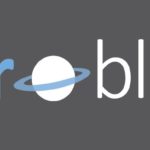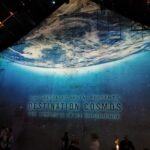It’s Sonic Acts time. Every year the art, music, science festival in Amsterdam comes back with a rich programme, featuring concerts, talks, and a great atmosphere. The topic around which everything rotates in this year’s edition, is ‘The Geologic Imagination’, with the ‘Anthropocene’ as the main focus for the scientific and artistic debate. Although the term has already been used at least as early as the 1960s, in 2008, a group of scientists proposed to the Geological Society of London to use the term for indicating the current geological era, marked by the radical human effects on the Earth’s landscape and life cycle. A paper published in January 2015, proposed the 16 July 1945 as the exact date for the start of this new geological epoch.
The festival tries to address the topic of Anthropocene from different perspectives, such as the human electromagnetic impact, which results in electromagnetic polluted environments, with great social and physiological consequences. The film Quiet Zone, shown as part of the festival, addresses this topic by narrating the story of a woman in the US forced to move from area to area to avoid highly charged electromagnetic environments which cause great distress to her physiological well being.
The disappearance of the night sky in most populated areas on Earth is another consequence of such pollution, with which, it seems we are now so accustomed. Starry night skies, which were the norm until fifty years ago, are now experienced only by a handful of people living in remote areas, not affected by light pollution. Paul Bogard, one of the conference speakers, explains the disappearance of the night sky, based on his book The End of Night: Searching for Natural Darkness in an Age of Artificial Light (2013), which perhaps many astrophotographers following our blog know by heart already.
Electromagnetic pollution however is an interesting instrument of cultural enquiry for the artists who attempt to make the invisible electromagnetic spectrum visible by mean of light and sound installations and performances. The history of this experimental art practice has been traced by historian Douglas Kahn in his recent book Earth Sound Earth Signal: Energies and Earth Magnitude in the Arts and his presentation is one of the highlights of the festival. Globalization of cities and the super scale of infrastructures, production, data centres, is the topic of a fascinating presentation by British architect Liam Young, who take us on a dystopian journey across the two dimensional allure of the Internet visual culture.

Model of acoustic propagation based on actual meteorological data between the Cornell loft in Ithaca, NY, USA (right edge of plot) and the Jersey Hill experimental release site (left edge of plot) on the one day that Cornell pigeons were well oriented there (inset circular diagram) and returned normally to the loft. Usually, Jersey Hill is in an acoustic ?shadow? zone relative to the loft, but on this day infrasonic signals were transmitted directly from the loft area to this release site due to abnormal atmospheric conditions.
The last day of the festival focuses on the invisible network of long waves, which envelops the Earth, with a tremendous effect on bird navigation, as we learn from an intriguing presentation by geophysicist Jon Hagstrum. Pigeons apparently can find their ‘home’ or ‘loft’ from anywhere, as long as they are able to hear the low frequency infrasounds produced by the movement of the oceans. These infrasounds continue reverberating across the continents, generating very specific ultrasound signatures according to the terrain crossed. This is what allows pigeons to find their ‘home’ even when partly blind folded (see illustration above). To conclude the Sonic Acts lecture series, cultural historian Hillel Schwartz narrates a brief history of ‘waves’, from the beginning of the XIX Century to present times. Why from the XIX Century onwards I ask: this is when the concept of waves was formalized, thanks to discoveries in physical sciences.
The Sonic Acts festival is really for anybody interested in gaining a greater awareness of timely issues, from a philosophical, scientific and artistic perspective. The festival successfully combines a great panel of lectures with art exhibits, theory and practice intersect but never too literally, making space for individual reflection.








Goedemorgen Daniela,
Congratulations, me honnoured fellow Astroblog- colleague with this, your firstever (if I remember correctly, that is??), interesting and very well written “real astroblogje”! More where that came from…..encore….bis..bis….and all that!!
Hello Jan, thank you :-))) this is my third blog, you haven’t been paying attention ;-))) ;-p
Oups….Arie already “warned me for the wrath of Rome” and loo and behold there it is.
OK….I plead guilty, I apparently lost count, must be an age-thing… and….therefore please accept my sincere apologies for being such an “astroblogs-hooligan”…(as you see Dutch hooligans are everywhere!!)…and also, please don’t send me to the colloseum as I don’t taste very well as “big cat fodder”…hihi!!